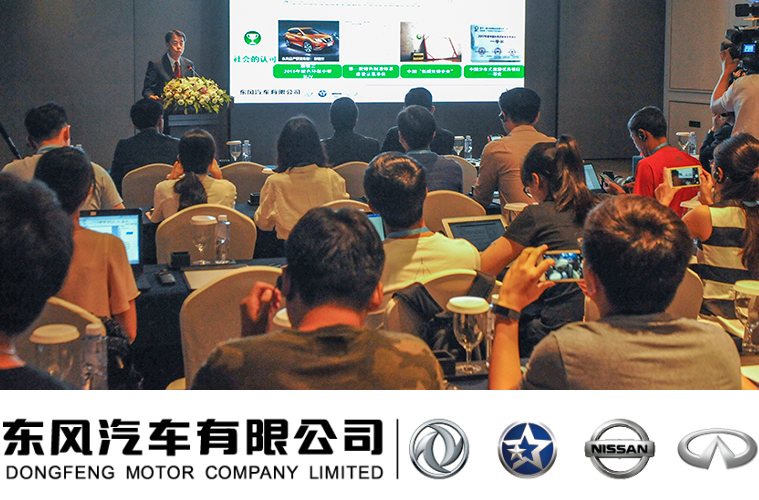
Image: Nissan
Dongfeng Motor Company Limited (DFL) says it will accelerate its “Green 2022 Plan”, which will see 20 electrified vehicle models by 2022, plus three solar farms developed.
Dongfeng Motor Company Limited is a 50-50 joint venture between China’s Dongfeng Group and Nissan Motor Co., Ltd. that was established in June 2003. Last year, its sales of vehicles (all types) reached 1.52 million units.
DFL says it plans to introduce 20 electrified models under its four brands by 2022, both EV + e-POWER (petrol-electric drivetrain) vehicles. By 2022, 30% of DFL sales are expected be EV and e-POWER products.
The company is also greening its manufacturing operations, with three solar farms to be established and various energy efficiency strategies implemented aiming to achieve a 20% reduction in energy consumption. Intelligent water systems will contribute to a 35% reduction in water consumption and upgrades to 27 paint facilities will result in VOC (volatile organic compounds) emissions slashed by 50%.
Looking past manufacturing, advanced battery regeneration technology will be integrated into its operations, with refurbished EV batteries to be used in energy storage applications for local communities and industry.
“China’s automotive industry is facing a period of strategic opportunity,” said Uchida Makoto, Nissan global senior vice president and DFL president. “By developing new energy vehicles and managing the process in a green and sustainable manner, DFL is seizing the opportunity.”
A recent BBC report stated approximately four million electric vehicles are now on the road globally. While this is still a very small percentage of all vehicles1, it’s a big jump from the 500,000 vehicles in 2014.
Bloomberg New Energy Finance’s head of advanced transport said he expected electric vehicles will cost the same as internal combustion engine (ICE) cars by the mid-2020s.
The Australian Electric Vehicle Market Study, published in June, made a bold prediction that EVs could make up 90 percent of all cars and light commercial vehicles on Australian roads by 2050, but that assumes a number of ducks are lined up.
However, with rapid advancements in battery technology and the cost of vehicle energy storage plummeting, charging stations popping up all over the place and more home owners viewing their rooftops as the base for potential refueling stations powered by the sun, electric cars look set to roll over the competition.
Related: How Many Solar Panels Do You Need To Charge An Electric Car?
Footnotes
- The global vehicle population stood at 1.32 billion cars and trucks at the end of 2016 according to Wards Intelligence ↩

 RSS - Posts
RSS - Posts



Speak Your Mind